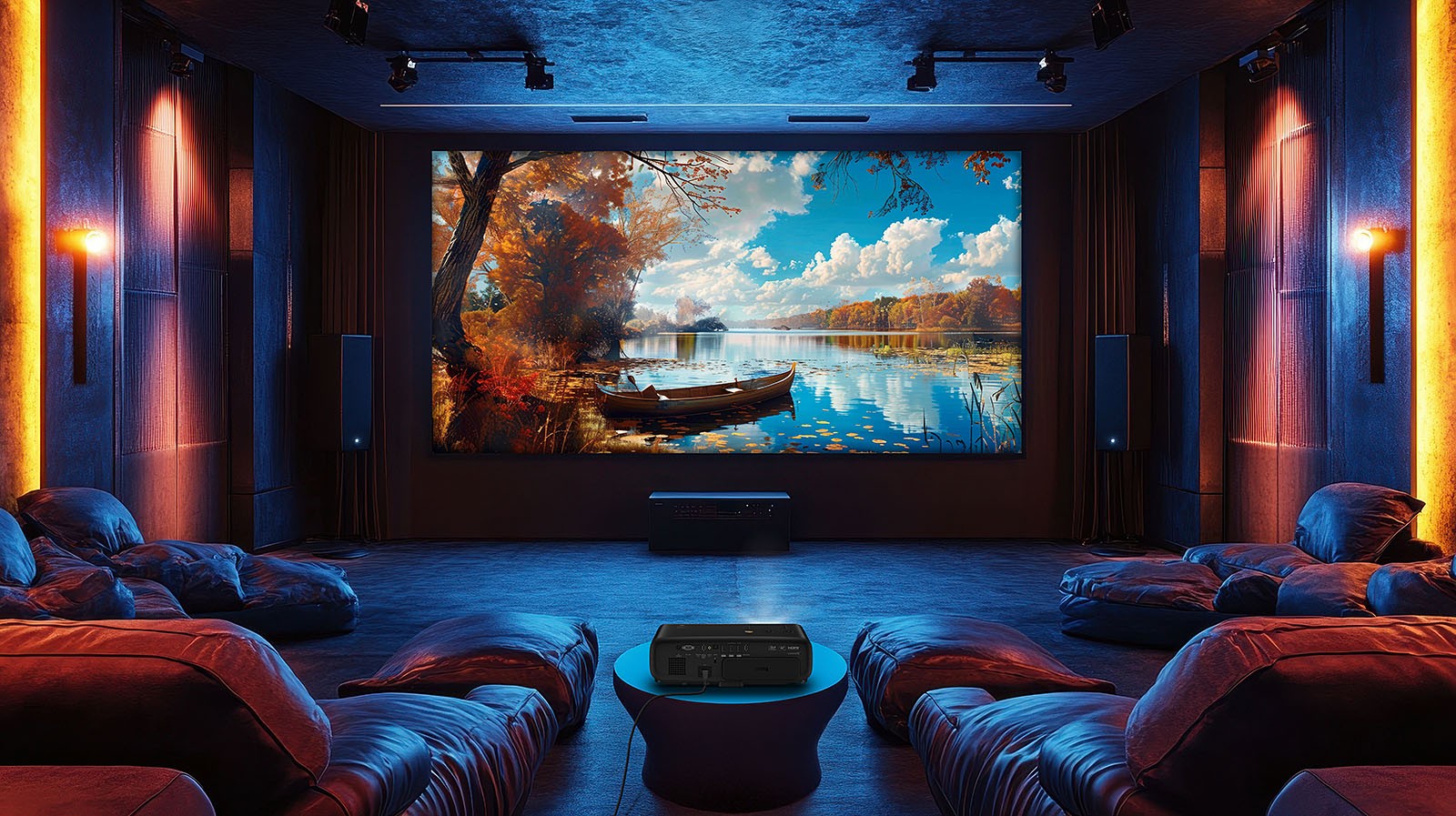The BenQ W4100i therefore expands the Taiwanese manufacturer's Home Cinema range. With its [abc]Ultra HD[/abc] [abc]4K[/abc] compatibility and a DCI-P3 gamut coverage announced at 100%, the BenQ W4100i displays specifications perfectly suited to beautiful and large images, particularly from HDR sources.
BenQ W4100i Vs BenQ W4000i, what are the main differences?££££
The first major development of the W4100i concerns optimized management of the HDR10 signal with the Dynamic Tone Mapping process. The second is called the Global Contrast Enhancer which, as its name indicates, generally improves the contrast for a significantly more detailed rendering. These latter complement the various video treatments of the HDR Pro functionality already present, the Local Contrast Enhancer which divides each image into approximately 1,000 independently treated zones (each with its gamma curve) for more displayed nuances and increased dynamics, and the Dynamic Black for precise adjustment, either image by image, of the brightness level in their bright and dark sections.
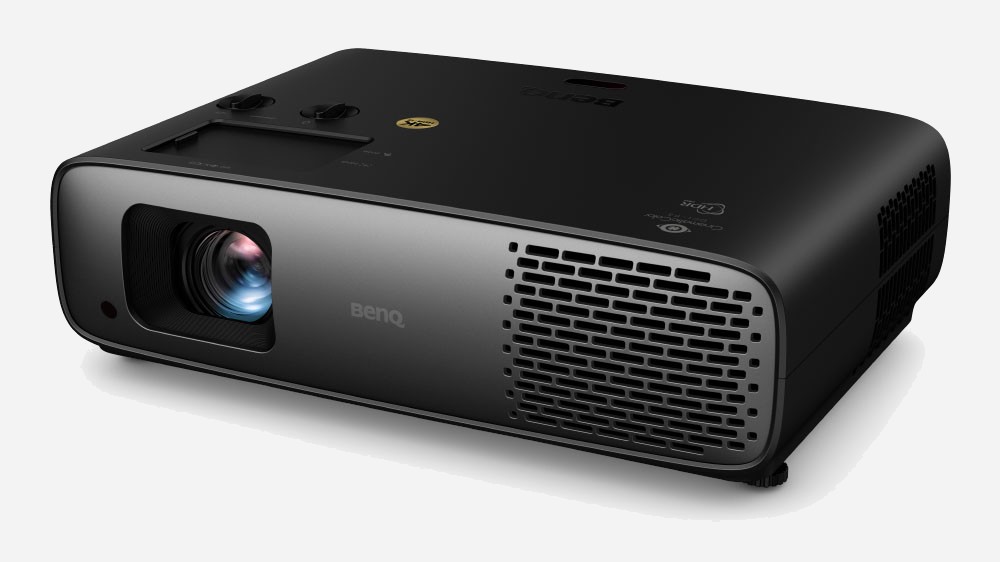
BenQ W4100i, AI Cinema mode££££
Similarly, compared to the W4000i, the BenQ W4100i of course includes the AI Cinema mode. Artificial intelligence analyzes in real time the nature of the images displayed and optimizes its processing. A close-up face will not be displayed on the projection screen like a wide-angle view of a landscape. Likewise, a specific algorithm for managing streaming content is part of it. Compressed, sometimes heavily, the rendering of these in very large on a canvas can be frightening. This mode is present to compensate as much as possible for these defects.
BenQ W4100i, main specifications££££
Model [abc]HD Ready[/abc] [abc]2 160p[/abc] and [abc]3D Ready[/abc], the BenQ W4100i is still based on the 0.65'' (1.65 cm) DMD chip signed Texas Instrument which has 1,920 x 1,080 pixels to generate an Ultra HD 4K image through the XPR4 process (wobulation). The hyper-high switching speed of the mirrors (7 microseconds) is used via a specific video processing to create 8 million pixels for each displayed image (one real pixel ultimately gives four pixels).
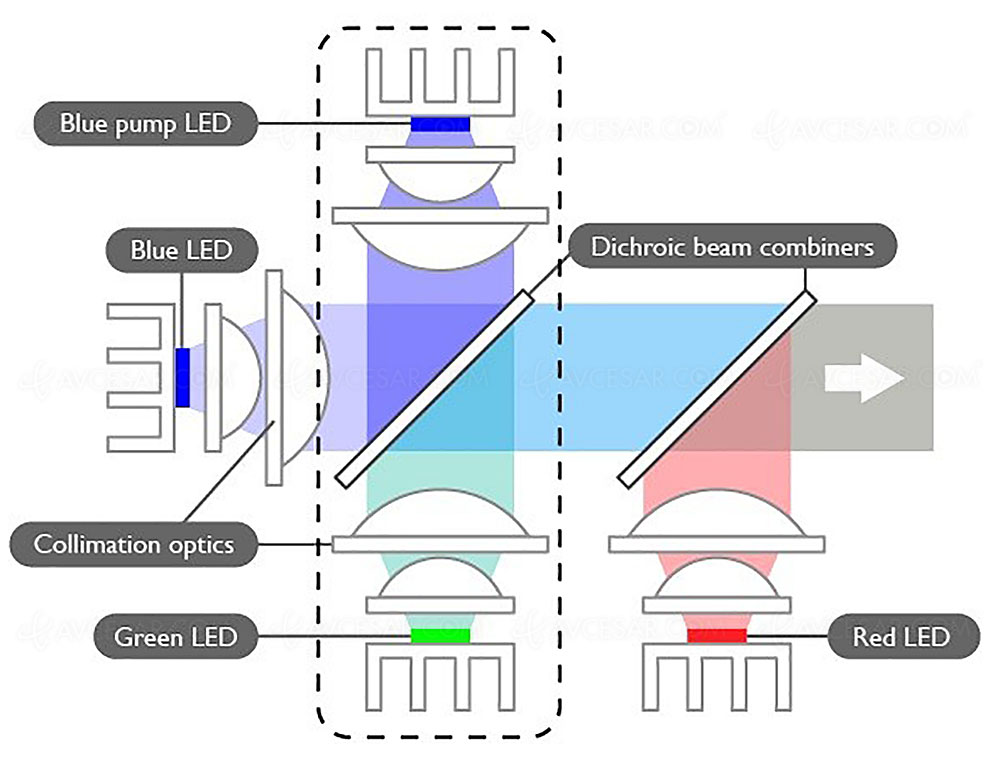
The light source is a 4LED composed of [abc]RGB[/abc]B diodes with sequential ignition, associated with a WCG (Wide Color Gamut) filter. This means that it has four diodes, one red, one green and two blue (see photo above). The latter is converted into green via a phosphor treatment (see illustration above) to improve the efficiency of the green and boost the brightness by approximately 10% compared to a [abc]LED[/abc] [abc]RGB[/abc] model. No encoder wheel, therefore. The lifespan announces 20,000 hours in Normal mode, 30,000 hours in Eco mode.
BenQ W4100i, specifications continued££££
Based on HDR Pro technology specifically optimized for video projection, the BenQ W4100i supports [abc]HDR10[/abc]/HDR10+ and [abc]HDR HLG[/abc] formats. Brightness is 3,200 lumens (reduced to 2,050 lumens after certified D65 calibration, 1,250 lumens with the DCI-P3 filter) for a contrast ratio of 3,000,000:1. Finally, MEMC motion compensation is also included and grayscale calibration is now possible on 11 points.
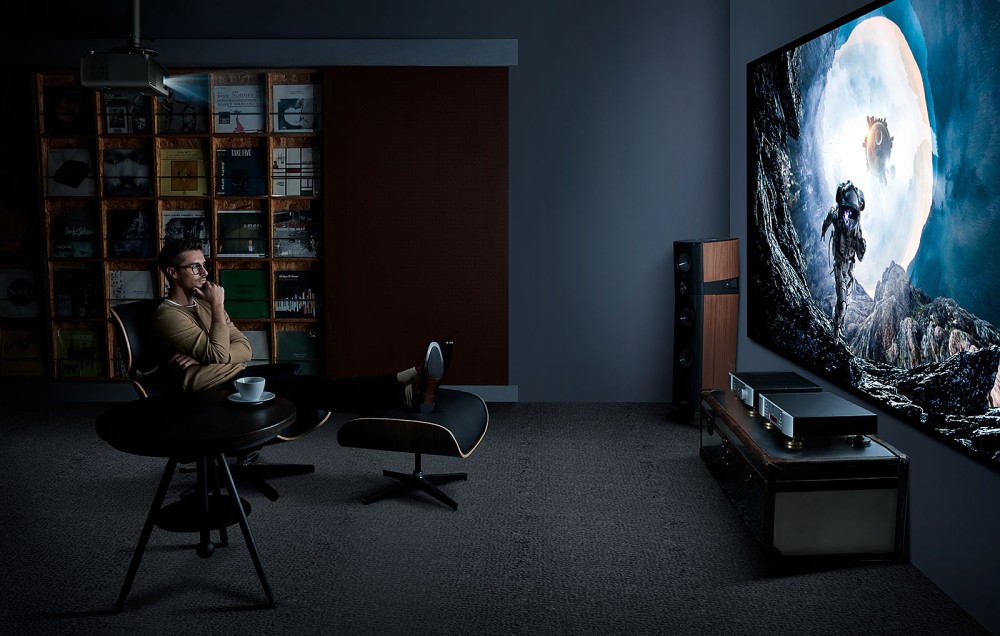
Always on the menu: a 1.3x manual zoom to display a diagonal of up to 300'' (762 cm). Finally, we note a vertical/horizontal keystone correction ±30°, a vertical/horizontal [abc]Lens Shift[/abc] (0-60%/±15%) and a manual focus adjustable via a rotating ring, located on the side of the video projector. Finally, the audio section based on a "home" Trevolo system (see our news BenQ Trevolo: portable electrostatic audio system) delivers a total power of 5 watts.
BenQ W4100i, Android TV dongle££££
Of course, the BenQ W4100i is also 3D DLP Link compatible. We also note an operating noise oscillating between 29 dB and 30 dB, respectively in Eco and Normal mode. Finally, the BenQ W4100i accommodates an Android TV dongle in its base in a specific location to access the Google universe with the Google Play Store. It is therefore easy to install your favorite applications: Amazon Prime Video, Disney+, Apple TV+, myCanal… Namely, the Netflix 4K HDR application is directly integrated to enjoy your favorite films, series or documentaries. Not to mention the [abc]ChromeCast (integrated)[/abc] and [abc]AirPlay[/abc] functions to display a suitable source wirelessly plus the ISF certification.
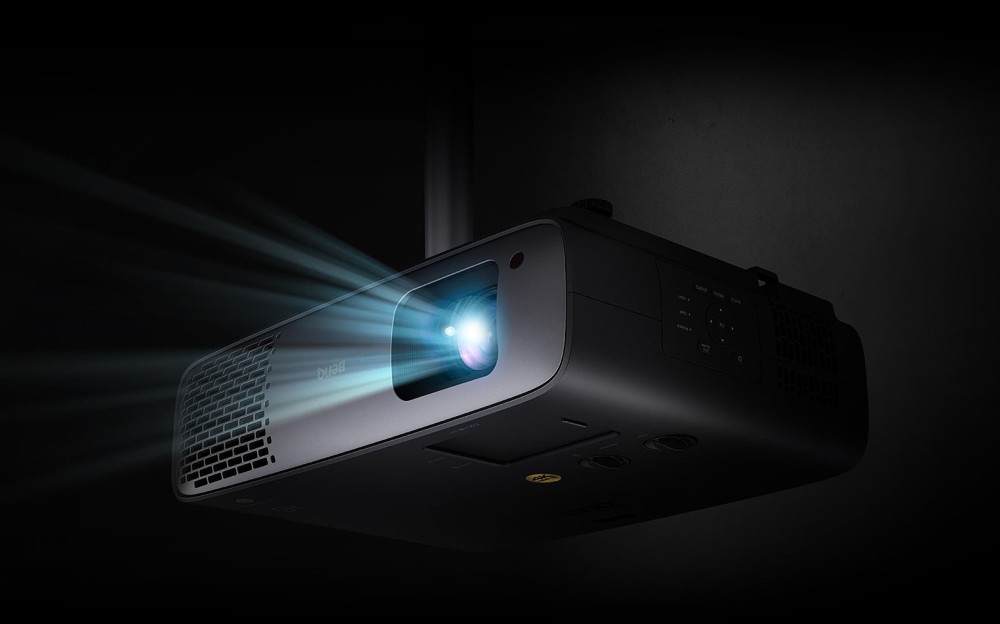
BenQ W4100i, connectivity££££
The connectivity includes three [abc]HDMI[/abc] [abc]HDCP[/abc] 2.3 inputs, two 2.0b and one 2.1 compatible with 120 Hz input (1080p/240 displayed) and another with the [abc]eARC[/abc] function. Also present: a 3.5 mm mini-Jack output, an [abc]optical[/abc] output, an [abc]RS-232[/abc] socket, a 12V [abc]Trigger[/abc], a powered [abc]USB[/abc] Host port and a mini-USB Type B port dedicated to [abc]Firmware[/abc] updates. It is also worth mentioning the [abc]Wi-Fi[/abc] ac and [abc]Bluetooth[/abc] 5.0 compatibility.
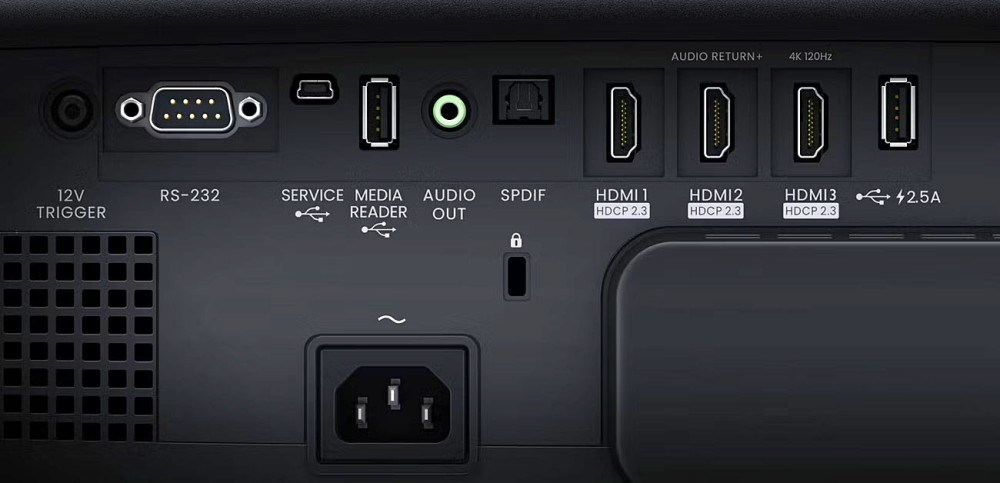
Lastly, the BenQ W4100i is compatible with [abc]2 160p[/abc]/60 (UHD 4K at 60 Hz) but also [abc]1 080p[/abc]/120 or even 1 080p/240. Input Lag is 17.9 ms with a 2160p@60 Hz signal, 8.7 ms in 1080p@240 Hz and 21 ms in 1080p@120 Hz. These are interesting characteristics for video games from a PS5, Xbox Series X console or a PC equipped with a powerful graphics card.
Immediate availability. Recommended price: 2,999 euros.
Reminder of the key features of the BenQ W4100i:
• Mono-[abc]DLP[/abc] type
• [abc]Ultra HD[/abc] resolution
• Native resolution: 1920 x 1080 pixels (3840 x 2160 with Texas Instrument XPR4 wobbling technology)
• DMD chip: TI 0.65''
• Contrast: 3,000,000:1
• Light source: 4LED
• Brightness: 3,200 lumens
• Input Lag: 17.9 ms (2160p@60 Hz), 8.7 ms (1080p@240 Hz), 21s]ms (1080p@120 Hz)
• CinematicColor function
• Cinemamaster Video+ function
• MEMC motion compensation
• Local Contrast Enhancer function
• Google Assistant function
• XPR Wobble function
• [abc]Chromecast (built-in)[/abc] function
• Smart Android TV functions
• [abc]HDR10[/abc] compatibility
• [abc]HDR10+[/abc] compatibility
• [abc]3D Ready[/abc] compatibility ([abc]BD 3D[/abc] and DLP Link)
• [abc]HDR HLG[/abc] compatibility
• [abc]HDCP[/abc] 2.2 compatibility
• [abc]Wi-Fi[/abc] ac compatibility
• [abc]Bluetooth[/abc] 5.0 compatibility
• [abc]eARC[/abc] compatibility
• [abc]AirPlay[/abc] compatibility
• Gamut: 100% DCI-P3
• Sound section: 1.0
• Power: 5 W
• 3D compatibility: yes
• Connections: 3 [abc]HDMI[/abc] [abc]HDCP[/abc] 2.3 inputs, two 2.0b and one 2.1 compatible with 120 Hz input (1080p/240 displayed), a 3.5 mm mini-jack output, an [abc]optical[/abc] output, an [abc]RS-232[/abc] socket, a 12V [abc]Trigger[/abc] port and a [abc]USB[/abc] powered
• Zoom: 1.3x
• Noise level: 329 dB in Eco mode, 32 dB in Normal mode
• Certification: [abc]ISF[/abc]
• Lamp life: 30,000 h in Eco mode and 20,000 h in Normal mode
• Vertical keystone correction: + or -30°
• Lens Shift: vertical/horizontal (0-60%/±15%)
• Weight: 6.1 kg
• Power consumption: 405 W in Max mode, 380 W in Normal mode
• Dimensions (W x H x D): 420.5 x 135 x 312 mm
